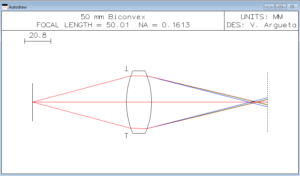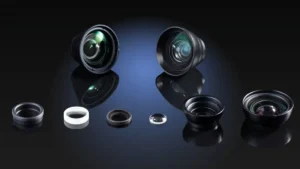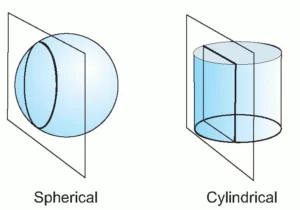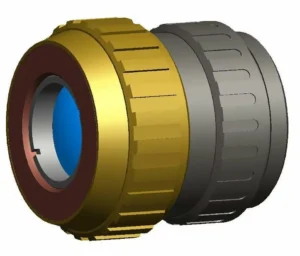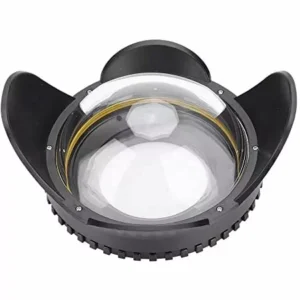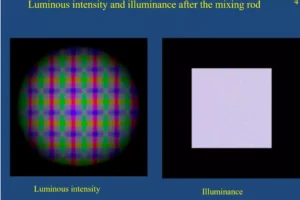In many applications of lens design, avoiding chromatic aberrations is a key performance requirement. In this video, we review some of the causes of chromatic aberrations and methods to correct them.
•All optical media have dispersion, meaning the index of refraction depends on the spectrum wavelength
•The plots are not linear – they are often steeper in the blue region and smoother in the red
•Approximation formulas for dispersion of glass include: Schott, Conrady, Herzberger, and Sellmeier.

A single optical element has different chromatic focus position for different wavelengths
Focusing error is Δs^′=-〖f^′〗_d/V_d
Where V_d=(n_d-1)/(n_F-n_C ) is Abbe number
n_d – index of refraction of the d-line of spectrum
n_F – index of refraction of the F-line of spectrum
n_C – index of refraction of the C-line of spectrum
Lenses with bigger Abbe number have smaller achromatic focus error
Chromatic difference depends only on the optical power and Abbe number but not on radii or shape of lens
To correct chromatic aberrations, glasses with different V are needed. Usually it is “Crown glass” with higher V and “Flint glass” with lower V
To build an achromatic doublet where 2 wavelengths foci coincide, the next condition should be satisfied
Δs^′=-〖f^′〗_1/V_1 -〖f^′〗_2/V_2 =0
〖f′〗_1⁄〖f′〗_2 =-V_1⁄V_2


Therefore:
– Since V is positive for all optical glasses, lenses have to be positive and negative.
– If a doublet needs to have a positive, then the optical power of the positive element has to be bigger than that of the whole doublet
– To decrease the optical power of the positive element, Abbe number should be as big as possible
– An achromatic doublet can eliminate the difference of a couple of selected wavelengths but there is focus difference for other wavelengths. This difference is called “secondary spectrum”
– The more difference in the Abbe number of crown glass and flint glass, the more the secondary spectrum
Secondary spectrum is
〖∆S′〗_(F-d)=f′(P_1-P_2)/(V_1-V_2 )
Where P=(n_F-n_d)/(n_F-n_C )

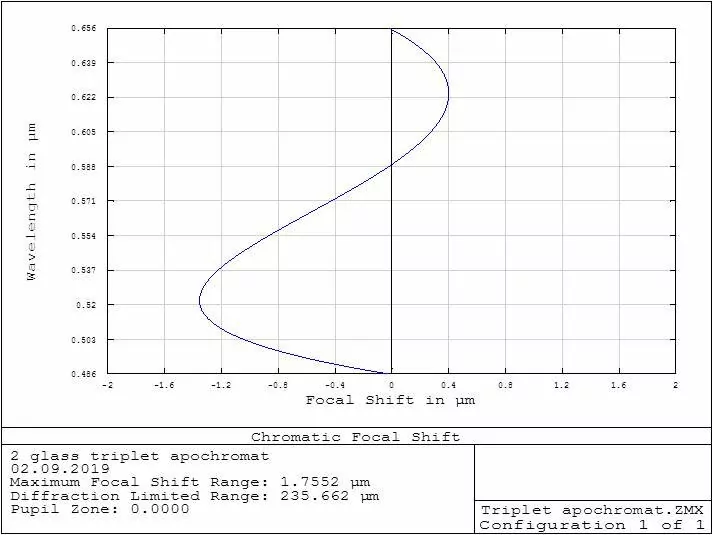
Apochromatic correction means that the lens provides correction of chromatic aberrations for 3 selected wavelengths for the elimination of secondary spectrum.
Usually 3 lenses with 2-3 different glasses are used to achieve this.
The condition is P_1=P_2
For satisfying this condition, unusual glasses with particular relations of V and P are required. Those are glasses with special dispersion behavior.
There are Crown glasses with long dispersion in the blue region and Flint glass with short dispersion in that region.
Schott in Germany invented such glasses.
They are named “Kurtz Flint Sonder” – KzFS type and “Lang Schwer Kron” – LgSK type glasses
The aim should be as small as possible a “Tertiary spectrum”.
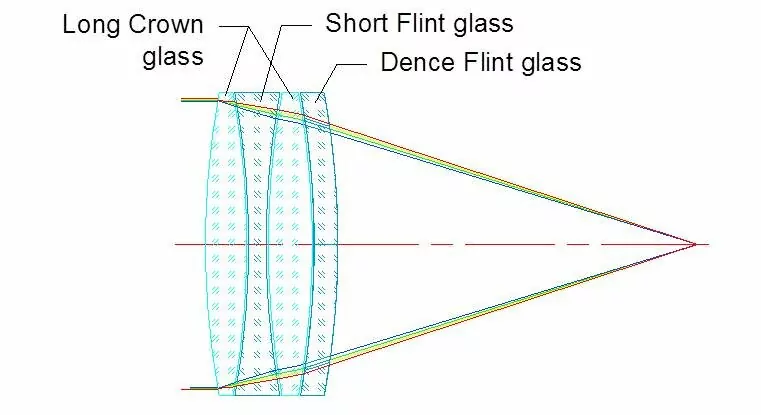
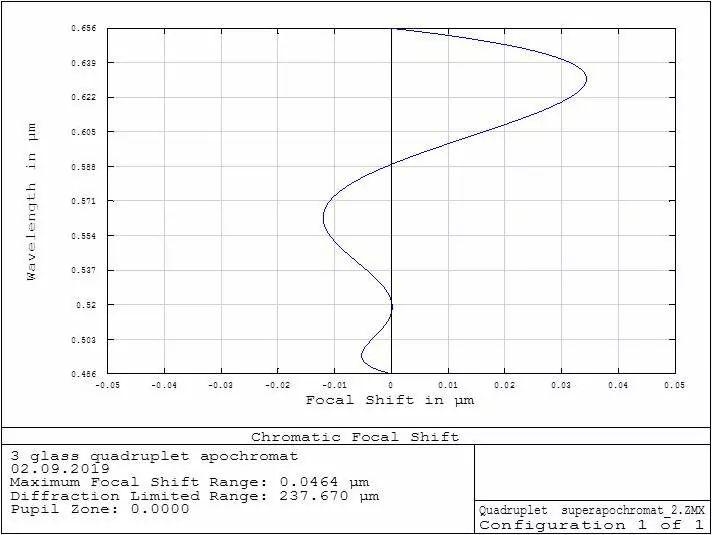
Super Apochromatic correction means that the lens provides correction of chromatic aberrations for 4 selected wavelengths.
Usually 3-4 lens elements with 3 different glasses are used to achieve this.
Besides Long Crown glass and Short Flint glass, additional glass is used to get better design result, for example Dense Flint – SF type
The Chromatic difference of spherical aberrations or spherochromatism can appear in achromatic corrected lens with large aperture.
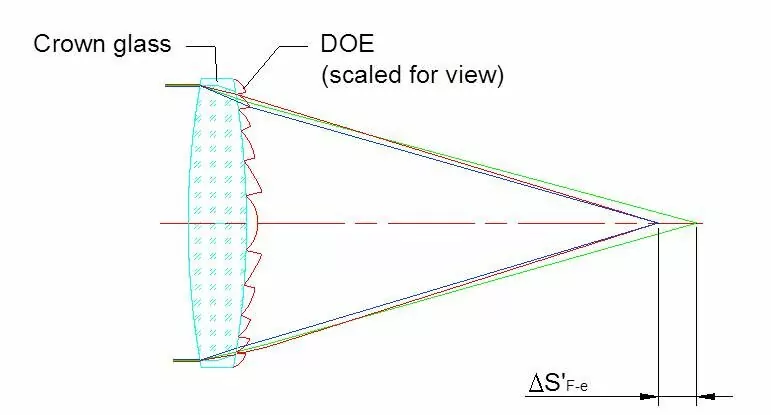
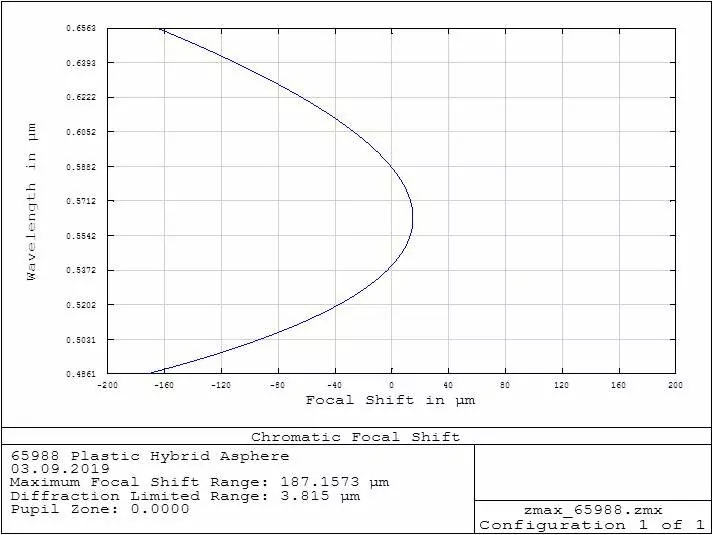
As for a glass achromatic doublet with 2 wavelengths focus shift correction, these conditions should be satisfied
Δs^′=-〖f^′〗_1d/V_1d -〖f^′〗_2d/V_2d =0
〖f′〗_1⁄〖f′〗_2 =-V_1⁄V_2
Abbe number for diffraction element is described as
V_d=λ_d/(λ_f-λ_c )=-3.452
Thus:
1) A diffractive optical element has bigger dispersion than optical glass.
2) The Abbe number of the diffractive element is negative. The hybrid achromatic lens with positive optical power should be composed of a positive refractive element and a positive diffraction one. The “crown element” of a hybrid achromatic doublet will have smaller optical power to the whole achromatic lens.
The essential dispersion of the diffractive element “secondary spectrum” is bigger than the full refractive achromatic doublet. Also secondary spectrum of Hybrid achromatic doublet is negative
Usually spherical aberration is corrected for one wavelength of spectral waveband, for example for green in the visual band.
Some residual spherical aberration can be seen for other wavelengths inside of the working band despite color correction.
Spherochromatism should be corrected additionally using additional lens parameters. There can be residual color difference for other aberrations: coma, field curvature and distortion
7-element design with 4 types of glass. Wide band 5 color superachromat with correction of spherochromatism
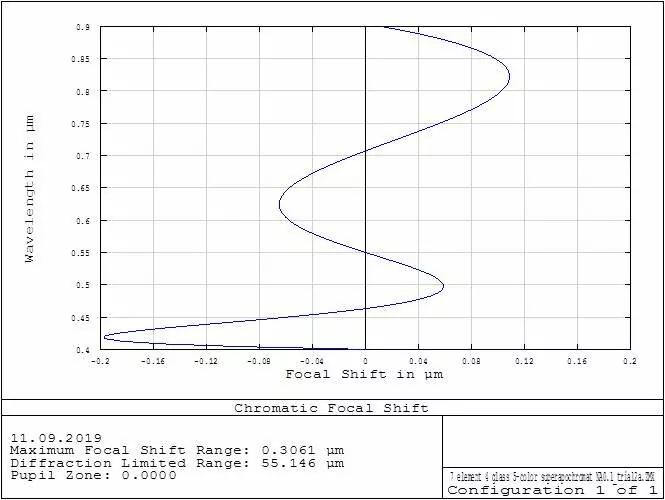
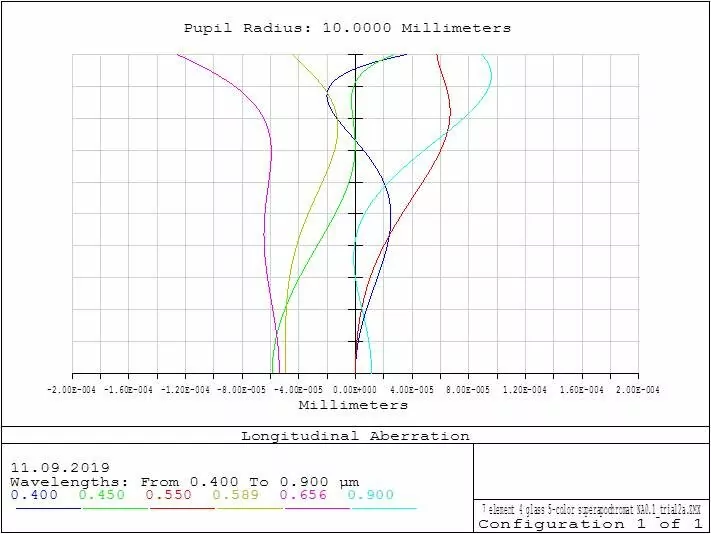
4 glass design was used for achieving 5 color correction superachromat in 0.4 to 0.9 microns waveband.
Spherochromatism is corrected using additional parameters provided by 7 elements design
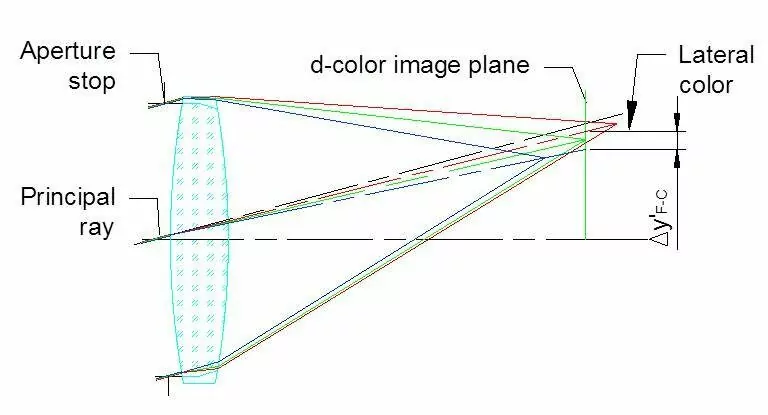
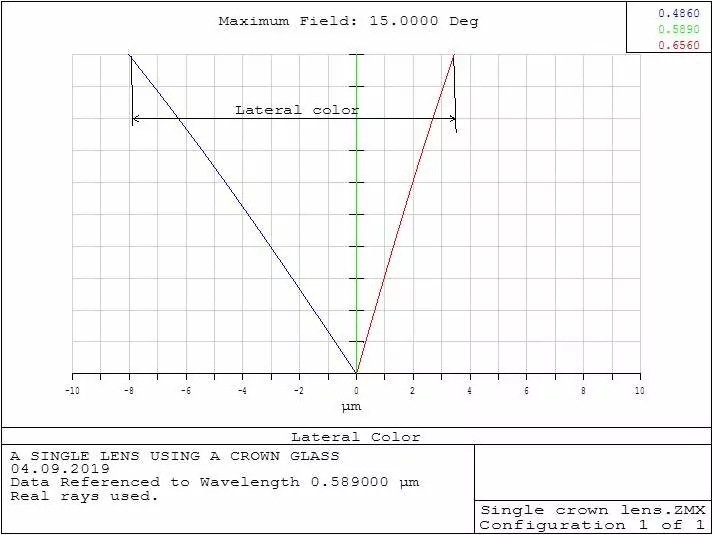
Lateral color is chromatic aberration of principal rays.
Lateral color is difference of intersection of principal rays for blue and red light.
Lateral color if not corrected appears in the field of view. If can be seen in a simple eyepiece when you look through the FOV from the center to the edge of field
Summary
It is not possible to reach ideal color correction because of very different dispersion behavior of real existing glasses. Only correction for several wavelengths within a wavelength region is possible.
The task is difficult for a system with high aperture because the correction of spherochromatism is going to be more difficult.
Lateral color is more difficult to eliminate and requires additional optical system parameters to correct.
The residual spectrum can be decreased below the diffraction limit as a result of diffraction in a given optical system.
Need assistance designing a custom optic or imaging lens ? Learn more about our design services here.
